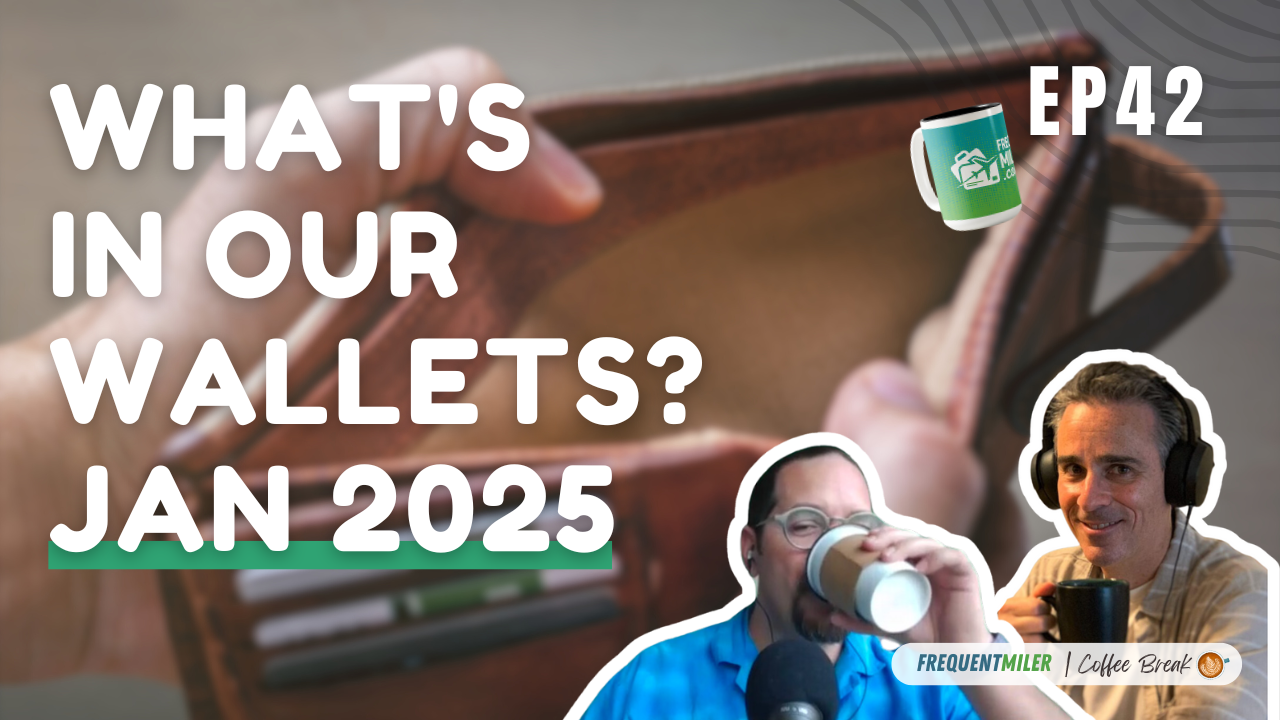Want Better Teaching? Get Better Curricula.
Bringing science-informed instruction to scale requires time, patience, and more research into what works The post Want Better Teaching? Get Better Curricula. appeared first on Education Next.


It’s clear, from the experience of schools across the country and around the world, that when teachers align their instruction with the principles of cognitive science—whether intentionally or not—all students can benefit. Those who benefit most are generally the students who struggle in a system where retention of information is considered relatively unimportant and learning through unguided inquiry rather than explicit instruction is valued. Science-based teaching can not only raise the level of student achievement overall but also make the system more equitable by narrowing gaps between high- and low-achievers.
Unfortunately, this kind of teaching is happening in only a few small pockets in the United States, and many educators are either unfamiliar with the principles behind it or view them with skepticism or outright hostility due to their training. What can be done to overcome those obstacles and bring science-informed teaching to the millions of children who could benefit from it?
We need a sense of urgency, but we also need to recognize that solving this problem at scale will take a while. The United States has an extremely decentralized education system, so there’s no way to simply legislate a shift in curriculum and pedagogy for the nation as a whole. Even in countries with less decentralized systems, it’s been difficult to make much headway.
Still, in the United States, there is a lot that government can do to encourage a shift to science-informed teaching. No state, to my knowledge, has explicitly embraced principles of cognitive science, but most have now adopted some legislation or set of policies aimed at bringing early literacy instruction in line with the science of reading—which is a crucial component of cognitive science.
Unfortunately, at the time of this writing, those states have almost all focused narrowly on foundational skills, requiring measures such as dyslexia screening and teacher training in phonics instruction. There has been little or no attention to the need to build knowledge to enable reading comprehension, let alone to the need for explicit instruction in areas other than phonics.
Studies have shown that even though phonics-focused state policies boost test scores in the elementary grades, the benefits fade away when students reach higher grade levels. One reason may be that multisyllabic words are harder to decode, and another may be that reading proficiency increasingly requires more than just decoding ability. The texts students are expected to read, including the passages on reading tests, begin to assume more academic knowledge, more sophisticated vocabulary, and familiarity with more complex syntax. If students haven’t acquired those things during the elementary grades, they’re likely to hit a wall.
It’s clear that many students at higher grade levels experience reading difficulties. A RAND report released in 2024 found that teachers in the upper elementary and middle school grades report that 44 percent of their students always or nearly always struggle to read their instructional materials—and, teachers said, students spend more than half of class time reading and writing, or trying to. The New York Times reported that at city high schools serving the lowest-income students, it was “not uncommon for a quarter of incoming freshmen to test at or below a 3rd grade reading level.” It’s not clear how many of these students received effective phonics instruction at lower grade levels—but, as the studies of phonics-focused state policies indicate, even if they did, that’s not enough to ensure their success.
For at least four decades, government efforts to improve student outcomes have largely failed to address this problem. Starting in the 1980s, reform focused primarily on encouraging states to create academic standards that broadly defined what students should know and be able to do at specific grade levels. There’s little or no evidence that more rigorous standards raise test scores. On the other hand, there is quite a bit of evidence that a rigorous curriculum can.
Needed: Curriculum-Based Reform, Supported by PD

by Natalie Wexler
ASCD, 2025, $36.95; 240 pages.
Many teachers don’t use whatever curriculum their school or district recommends or even requires. They may well have been told during their training that good teachers don’t follow a prescribed curriculum; instead, they create their own. Their professors may have imparted the idea that because students vary so much, no scripted curriculum could possibly meet the needs of students in their particular classroom. But even though children are indeed different, they share a lot of commonalities in terms of how they learn.
If a curriculum is ineffective, it might well make sense not to follow it—although that places an extremely heavy burden on teachers to come up with lesson plans from scratch. Some tweaking or supplementing of a curriculum may make sense and is probably inevitable. If, however, teachers feel the curriculum is too hard for their students, which is how many teachers initially view a knowledge-building curriculum, they may water it down rather than provide the kind of explicit, interactive teaching that could enable students to meet the challenge.
What’s needed is the combination of a high-quality curriculum and training for teachers—and school and district leaders—that is grounded in that curriculum. Rather than focusing on how to teach critical thinking in the abstract, for example, the training might focus on how to get students to think critically about Westward Expansion or The House on Mango Street—or whatever content teachers are actually covering. One 2020 study found that 57 percent of teachers reported never receiving multiday professional learning grounded in the specifics of their curriculum; only 6 percent reported receiving more than a few such opportunities a year.
Teachers need to understand why cognitive science supports a content-rich, explicit instructional approach, as well as how to deliver instruction in a way that works best for their students. But without an effective curriculum—the what—the why and the how alone are unlikely to work.
Factors in Choosing Effective Curricula
A crucial question, then, is how districts and schools can identify curricula that are likely to be effective.
The state of Louisiana, under the visionary leadership of former superintendent John White, has been a leader in this area. Louisiana has a long history of local control over curriculum, so state officials can’t just mandate a particular curriculum or curricula. Instead, they’ve trained a cadre of teachers to review various curricula and sort them into three tiers, simultaneously creating teacher “ambassadors” who could spread their knowledge to others across the state. The state also made it easier for districts to buy top-rated curricula and to pay for vetted professional learning aligned to the curriculum a district was using.
Even if districts get good guidance on curriculum—and follow it—another problem is that state reading assessments will be unrelated to its content, putting pressure on teachers to focus on the skills or standards that the tests appear to be measuring. Internal school assessments designed to monitor student progress generally mimic the format of the state tests, giving students a passage on a topic they may know nothing about and asking a series of comprehension questions.
These tests are essentially assessing knowledge that students may or may not have. They’re blunt or even misleading instruments for measuring progress. If a school is using a good knowledge-building curriculum, it will come with its own assessments that are grounded in the content students have actually been taught. Those assessments should test whether students can recall key facts and concepts, but they should also go beyond that to ask students to do things like find the main idea of a text or make inferences—as long as the basis for those questions is content in the curriculum. Regular writing assignments, including those at the sentence level, are also an excellent way to track progress.
State assessments are a trickier issue. Again, Louisiana has been an innovator in this area by experimenting with a different kind of state reading test—one that is grounded in the content in its state-created ELA Guidebooks curriculum. When the state started its curriculum reform efforts years ago, it was dissatisfied with the available options and therefore created its own. Now, however, there are many more options, and it’s generally more effective for a state or district to adopt one of them than to create a curriculum from scratch—an extremely difficult endeavor.
In 2018, the state got federal approval to conduct a pilot of its new kind of reading test, and, as of this writing, it’s being given in 5th through 8th grade in districts that choose to participate. Some reading passages on the test are taken from books students have actually read, whereas others are from unfamiliar texts that relate to the content in the curriculum. For example, if students have read Lois Lowry’s The Giver, they’re likely to see a “hot read,” taken from that book, and also a “warm read” that might be from another work of dystopian fiction. Then they’ll be asked to write an essay synthesizing the new and familiar texts.
As of this writing, the state hasn’t released any data comparing the pilot program to its regular state literacy tests, and uptake has been slow, with only about 28 percent of districts participating. Still, based on what I heard when I visited Monroe, Louisiana, which is a participating district, the experiment is achieving many of its objectives. Educators whose students took the “innovative assessment,” as it’s called, told me they’ve seen growth in students’ test scores—sometimes significant growth, depending on the school—and that students feel more confident answering questions on topics they know about. In addition, they said, it has made the test more equitable.
Louisiana can engage in this experiment only because the Guidebooks curriculum is being used in roughly 80 percent of classrooms across the state, making the state unique. Even in states that review curricula and promulgate lists of approved materials for districts to consider, no curriculum is being used so widely, so it’s impossible to tie a state test to the content of any one curriculum.
What other states can do—and what Louisiana could do for schools not using Guidebooks—is to ground passages on reading tests in the content specified by state standards in science and social studies. All states have such content standards. They may have their flaws, but at least they include content of some kind. Linking a reading test to that content would encourage schools to allocate more time to science and social studies, enabling students to acquire substantive knowledge and vocabulary. It would also make reading tests more equitable by ensuring that the passages are on topics students are at least somewhat familiar with.
One Catch with Basing Reform on Curriculum: Defining Quality
There’s a potential problem, though, with making everything rest on curriculum. If the curriculum isn’t actually a high-quality, knowledge-building curriculum—even if it’s labeled as one—the whole structure is unlikely to work. This problem first became apparent after the Common Core State Standards were promulgated in 2010. The theory, as with the standards movement in general, was that publishers would create a curriculum based on the standards, and then the rest of the dominoes would fall into place and student achievement would rise.
What happened, though, to the dismay of the architects of the Common Core literacy standards, was that publishers made only cosmetic changes to their existing programs and slapped a sticker on them saying they were “Common Core aligned.” Perhaps that should have been foreseeable. The authors of the literacy standards believed that the only way for schools to enable students to meet the standards was by adopting and implementing a content-rich, knowledge-building curriculum, and there was language to that effect in the supplemental materials. Few people read those materials, though, and the standards themselves made no mention of building knowledge. They appeared to be just a somewhat different list of skills. As a result, most curriculum publishers—and most educators—didn’t recognize the need for a fundamental shift.
Officers at some philanthropic foundations, spearheaded by the Charles and Lynn Shusterman Family Philanthropies, realized the significance of the problem. They knew there were nontraditional curriculum developers that had gotten the message about the need for fundamental shifts and were creating products that incorporated them. But how were states, districts, and schools supposed to recognize the difference between a curriculum that was truly aligned to the new standards and one that merely had a sticker saying it was?
The solution the foundations came up with was an organization called EdReports, which was launched in 2015. The idea was to recruit classroom teachers, train them to recognize what made a curriculum a good one—one that was truly aligned to the Common Core standards or something like them—and issue reviews and ratings based on a detailed rubric. Since EdReports was to be funded by philanthropy rather than publishing companies, it would be objective in its reviews.
EdReports rates literacy curricula on three “gateways”: text complexity and quality, building knowledge, and usability. The top rating for each one is green, curricula that partially meet expectations get yellow, and the lowest rating is red. A curriculum needs to get green on each gateway in order to proceed to the next one.
In some ways, EdReports has been a resounding success. By 2022, according to the organization’s annual report, EdReports had been used by over 1,400 districts, representing nearly 16 million students. Although there are undoubtedly many places where curriculum isn’t yet part of the conversation—as one literacy consultant told me—where it is part of the conversation, EdReports is likely to pop up.
“The first line of screening for school systems,” said Kareem Weaver, the cofounder and executive director of a literacy-focused nonprofit called Fulcrum, “is EdReports 95 percent of the time.”
A number of states now use “all green on EdReports” as a proxy for high quality, and some, like Rhode Island, develop lists that include only curricula that have gotten all greens. EdReports has also trained curriculum reviewers for states and districts. In January 2024, the then-interim state superintendent of Maryland, Carey Wright, assured the state board of education that if a curriculum got all green on EdReports, “you can take that to the bank, that that is a high-quality piece of instructional material.”
All of this would be news to cheer if EdReports’s ratings were reliable. Unfortunately, many literacy experts and advocates I’ve spoken with say the organization’s yellow and green ratings have become increasingly mystifying. In its early years, EdReports was doing what it was intended to do—giving all greens to truly high-quality knowledge-building curricula that were developed by nontraditional publishers, many of them nonprofits. Around 2017, though, things began to change.
A curriculum called Bookworms, highly regarded by literacy experts who helped develop the Common Core, was given some yellows rather than all greens. After that, major publishers of the reading textbooks called basal readers began submitting their curricula to EdReports—in some cases, the same publishers that had affixed “Common Core aligned” stickers on their products without making fundamental changes—and EdReports gave some all greens. They include Wonders (McGraw-Hill), myView Literacy (Savvas, formerly Pearson), and Into Reading (Houghton Mifflin Harcourt). These programs now appear on many state adoption lists in part thanks to EdReports’s high ratings.
From what I have seen myself and heard from many educators and curriculum experts, these basal programs bear little resemblance to the knowledge-building curricula that got all greens in EdReports’s early days—curricula like Core Knowledge Language Arts and Wit & Wisdom. For one thing, they’re stuffed with more activities and features than any teacher could possibly cover in one school year. There may now be some high-quality texts in the mix, but there’s also a lot of time-wasting fluff.
At least some of these publishers are aware that their curricula are bloated. One reason, they say, is that they need to satisfy a plethora of state standards.
It’s not just standards that are causing bloat. If a basal program gets anything less than green from EdReports, the publisher may simply add whatever has been identified as missing and resubmit it for review. EdReports’s chief external affairs officer, Janna Chan, told me the organization revised its criteria in 2020 partly to guard against bloat, but the revision doesn’t seem to have had the desired effect.
Even though they’re overstuffed, the “all-green” basals are also too thin on content to do a good job of building knowledge. Instead of the meaty topics covered in effective knowledge-building curricula, such as “the American West” or “early American civilizations,” the basals focus on broad themes such as “Many Cultures, One World” and “How do people from different cultures contribute to a community?” These themes don’t provide children with the repeated exposure to the same vocabulary and concepts that enable them to retain information in longterm memory.
The EdReports criteria also don’t include evidence of a curriculum’s effectiveness. Bookworms, the curriculum that experts say has the best evidence for raising reading scores, has now failed to get all greens on three rounds of reviews over five years, with points taken off for different issues on each round. As a result, few if any states have put Bookworms on their approved lists.
Literacy consultant Kate Crist told me that EdReports has “such a thumb on the scale that it has sort of wreaked havoc.” It’s not just that states and districts are being misled into spending massive amounts of money on curricula that don’t work—which is bad enough. It’s also that a complex and interconnected superstructure has been built on top of a foundation that is flawed. Researchers at institutions like the RAND Corporation and journalists who write a about education routinely use all green on EdReports as a proxy for “high-quality,” making it impossible to determine how many schools or districts are using truly effective curricula and how many are not. It’s also difficult to figure out which curricula are leading to improved student outcomes.
One reason EdReports has been unreliable for so long is that, despite a general consensus among experts that its ratings are flawed (“We all talk about it,” one literacy consultant told me), few have been willing to speak up publicly. The reason, I’ve been told repeatedly, is that the powerful funders behind EdReports also fund a lot of other education organizations—and those they don’t fund often hope they’ll get funding in the future. The result is that no one wants to criticize the funders.
Ironically, unless things change, EdReports could be a perpetuator of the same problem it was designed to solve: ineffective curricula that are adorned with labels saying they’re effective. The theory was that philanthropic funding would prevent that from happening by ensuring objective ratings, but if people are reluctant to tell philanthropists they’ve made a mistake—or if philanthropists are reluctant to admit they’ve made a mistake—the end result is pretty much the same. The ratings may be objective, but they’re still misleading.
There’s probably no perfect way to rate curricula, just as there is no perfect curriculum. However, given the crucial role that curriculum plays in education—and the difficulty of judging quality—officials and educators need as much reliable guidance as possible. There are rubrics that states and districts can use for evaluating literacy curricula instead of relying on EdReports. Some literacy experts recommend an evaluation tool produced by The Reading League and another developed by the Knowledge Matters Campaign, which is specifically focused on knowledge building. (Disclosure: I serve on the board of the parent organization of the Knowledge Matters Campaign.)
In May 2024, The Reading League, through a project called Compass, began releasing its own reports on specific curricula, based on its curriculum evaluation guidelines. Those guidelines are grounded in a definition of the science of reading that includes both knowledge building and writing as well as foundational reading skills, although—like EdReports’s criteria—it doesn’t extend to the principles of cognitive science more generally. With only eight evaluated programs as of this writing, it remains to be seen whether Compass can dislodge EdReports from its deeply entrenched position of primacy.
Even if it can, The Reading League’s reports and guidelines have their own troubling aspects. While EdReports’s usability ratings are unreliable, The Reading League doesn’t even try to apply that criterion. It’s true that usability can be hard to evaluate, but it’s crucial for districts to have at least some information on that score.
More fundamentally, The Reading League, like EdReports, has given high marks for knowledge building to some curricula that don’t appear to deserve them. In addition, its guidelines place more emphasis on explicit comprehension strategy instruction and practice than is warranted by the evidence.
It would be helpful to have more reliable curriculum rubrics and ratings, but ultimately we need to go beyond those tools. We need rigorous, objective research that evaluates one specific curriculum against another, in different contexts. Typically, when researchers undertake experimental studies of curriculum or other interventions, they identify the intervention they’re testing but describe the control group as getting “business as usual.” Educators who are deciding between two or more curricula need to know how they stack up against each other, not how they do as compared to some unknown quantity.
In addition, these studies should last at least three years, because the evidence suggests that’s about how long it takes for the benefits of a knowledge-building curriculum to become apparent on the standardized reading comprehension tests that are considered the gold standard for evaluating effectiveness. Those studies are expensive, which is why so few of them get done. Given the urgency of the situation, though, the federal government should fund them in the same way they fund clinical trials of new drugs. Surely the education of the nation’s children is as important as its citizens’ health.
We also desperately need examples that policymakers and educators can look to—schools and, perhaps, entire districts that are doing it right. For that to happen, we need better data. We need to know what curricula are being used where—and we can’t just rely on EdReports’ ratings to define “high quality.” We need educators and leaders to step up and say, publicly, “This is what we’re doing. It’s working. Come see it for yourselves.” It’s no exaggeration to say that the futures of our children, and perhaps our democracy, largely depend on shining examples of what education can be, for all students.
Excerpted from Beyond the Science of Reading: Connecting Literacy Instruction to the Science of Learning by Natalie Wexler. Copyright © 2025 by Natalie Wexler. Published by ASCD. Reprinted by permission.
Natalie Wexler is an education writer. She is the co-author of The Writing Revolution 2.0: Advancing Thinking Through Writing in All Subjects and Grades (Jossey Bass 2024).
The post Want Better Teaching? Get Better Curricula. appeared first on Education Next.
What's Your Reaction?















































































